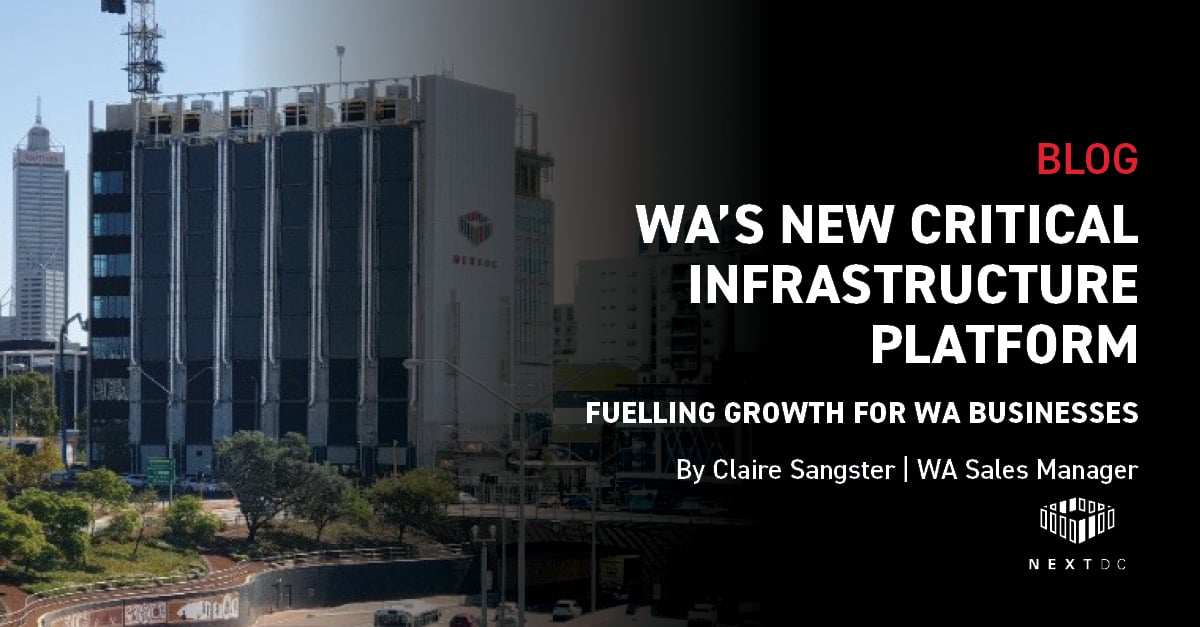Data centres are truly the unsung workhorses of the digital age. Not only do they represent the infrastructure platform that’s powering the digital economy, they also are responsible for managing the zettabytes of data informing organisational decisions and supporting lifestyles and communities. They house the hardware that stores, processes, protects and shares critical data and information keeping it safely held or flowing freely from point A to point B to point C… to point Z and beyond.
In short, they serve to connect everyone, to everything, from anywhere.
Just like everything else in the world of technology, the data centre industry evolves on an almost daily basis. For IT leaders, it can be hard to stay on top of the latest developments – as and when they happen.
The good news is that when you select the right data centre partners, you don’t have to stay across the details. They will do all the redundancy and resilience planning, regulatory compliance and infrastructure management on your behalf. They will also ensure that you are not competing with an inflationary market for sills and experience required to keep the lights on – all the time. You can get back to focusing on what’s most important in the comfort of knowing that all your power, security and interconnection challenges are safely and efficiently addressed with TCO savings achieved through scale.
There are five major trends shaping the data centre and digital infrastructure sector in 2023. It can be helpful to have a broad understanding of each of these to appreciate potential impacts on your broader IT strategy.
1. All eyes on cloud data security
With many organisations moving more workloads to the cloud, the scope for data security breaches has increased exponentially. The immediate fallout of data security breaches is well documented, with the average cost per breach reaching US$4.35 million, according to research by IBM. And that’s not even considering the possibilities associated with long-term brand reputational damage and loss of stakeholder confidence.
For the data centre industry, the challenge is clear: protecting our nation’s critical digital infrastructure from security threats in a holistic way. There’s been so much emphasis on cybersecurity, but our digital infrastructure needs a more balanced approach.
That’s why we protect our data centre footprint with an “All Hazards” security strategy, with equal emphasis, on cyber, physical, personnel and supply chain risk.
2. Scalable digital infrastructure is the new normal
Gone are the days when we kept our servers in the same physical location as our people – the era of the on-premise data centre has largely come and gone!
If you’re looking to embrace more scalable, agile and flexible IT operations, colocated digital infrastructure is the only solution. The same applies for any technology that is fed by large amounts of data – including artificial intelligence (AI), machine learning and the Internet of Things (IoT). The very simple equation is that lots of data requires significant amounts of compute power and storage capacity – and these requirements are growing exponentially year-on-year.
On-prem data centres simply can’t keep up with today's premium colocation data centres, which are the only option to provide the flexible, agile digital infrastructure with seamless direct access to an ecosystem of clouds, networks and digital service which is required to support IT operations of all sizes.
3. High availability data centres
We’re living in disrupted times where every minute counts. Unplanned downtime can be the difference between success and failure – especially if you’re in a “mission critical” organisation. That’s why high availability, fault tolerant data centres that maximise uptime are so essential to IT strategy.
Some of the key components of a high availability data centre include redundant power and cooling systems, multiple network connections with complete geodiversity, load balancing and failover mechanisms that automatically switch to backup systems or components in the event of a failure.
The Uptime Institute is the world’s best-known independent standard-bearer for digital infrastructure performance. Ensure your data centre has been rated against the Uptime Institute’s Tier Standards, from Tier I (basic capacity) to Tier IV (completely fault tolerant for 100% uptime).
4. Carbon neutral data centres
Technology — particularly data centres and digital infrastructure— is one of the fastest areas of growth for carbon emissions. Globally, data centres account for around 2% of the world’s carbon emissions, with the figure expected to reach 8% by 2030.
The focus is squarely on building carbon neutral data centres. In fact, 75% of organisations will have implemented a data centre infrastructure sustainability program driven by cost optimisation and stakeholder pressures by 2027, up from less than 5% in 2022, according to Gartner.
Your data centre partner should be pulling their weight to get to carbon neutral, too. Ensure you’re offered the choice to offset the carbon emissions associated with your data centre footprint; and that your provider is focused on sustainable innovation across the design, build, maintenance and operations of their facilities.
5. Data centre automation
Automation software and tools are driving innovation across a range of industries – and that includes digital infrastructure. In the data centre context, automation refers to the provisioning, configuration, deployment and management of data center resources such as servers, networking devices, storage systems and other infrastructure components.
As with any type of automation, in our data centres we aim to harness the technology to complete routine tasks and improve operational efficiency for our teams, which frees them up to focus on more strategic projects that drive innovation and value for our customers in the longer term.
Want to find out more about data centre trends for 2023?
The five data centre trends we’ve outlined above are shaping our nation’s digital infrastructure in 2023 and beyond. However, there’s much more to consider about how this applies to your business.
Reach out to NEXTDC if you would like to find out more about the critical trends affecting your data centre presence today.

